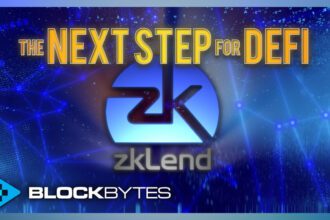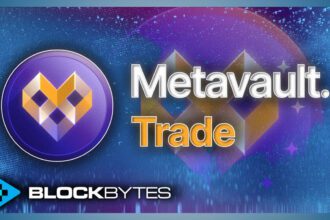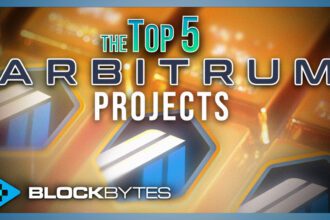Dude, if you love fruit rollups, wait until you try Optimistic Rollups…
The Mother of DeFi
Ethereum revolutionized blockchain technology by creating Smart Contracts, enabling all types of data to reside on-chain, not just transactions. This revolutionary addition to blockchain infrastructure facilitated the conception of DeFi. Ethereum saw rampant growth as decentralized finance protocols such as Maker, Compound and Yearn injected billions of dollars into the network. Ethereum, however, has struggled to keep up.
The problem
On Ethereum, every node must verify every single transaction. This rigorous checking leads to a robust and secure network but also long, drawn-out transaction times. Ethereum can only process around 12-15 transactions per second. When there is high network activity, the network quickly becomes congested, known as \”low throughput.\” During low throughput, finalizations become much slower while gas prices increase.
High Network activity = High Gas prices and slow transaction time.
What is the solution?
DeFi can’t work if it is slow and expensive, so what is the solution to this dilemma? How does the network scale to meet an increase in transactions while ensuring gas prices stay down? Scalability is part of the blockchain trilemma. The ultimate solution resides in the network\’s ability to scale while ensuring security.
One promising option is an innovative piece of technology called rollups. Rollups utilize Ethereum\’s ability to store data within the blockchain. To explain how they work, let’s break it down with a tantalizing fruit analogy – Yum!
Fruit rollups
The network is always hungry. Transactions are like a little fruit drop that a network has to eat. Ethereum not only consumes each fruit drop but also has to inspect each piece to ensure it is safe. This meticulousness leads to Ethereum being one of the slowest eaters around.
What if you could speed the process up? Instead of putting one little bit of fruit in a single drop, all the drops could be melted together into one long strand and then rolled up. The network could then guzzle down all that fruit in one swift bite, couldn\’t it?
Not quite…
Layer it up
Ethereum can still only process a finite amount of transactions per second. Simply rolling up multiple transactions on Ethereum would be equivalent to the network melting the drops, rolling them up, then unwinding them and nibbling each amount separately – what a waste of time. Rollups take it one step further.
Layer 2s are chains built on top of the Ethereum blockchain that create another layer for transactions to be validated. They help to increase network fluidity by taking some of the activity of the Layer 1. Transactions on Layer 2\’s execute far more quickly and with cheaper fees. The downside to these additional layers is they are inherently less secure.
The scalability dilemma
Ethereum has built up a formidable security system via its robust validation process. What makes rollups so innovative is they can benefit from both the Layer 2 efficiency and the underlying layer 1\’s security by shifting transaction computation off-chain while simultaneously storing the data on-chain. Let\’s break down how they work.
- Transactions are executed on a separate layer 2 chain
- They are processed faster with far cheaper fees
- The data from the transactions is compressed
- Smart contracts then rollup this data and send it to the main chain
- This stores transaction data on the secure layer 1
But how does Ethereum know that the data sent is legitimate? In the blockchain space, bad actors can manipulate transactions. The approach to this dilemma depends on the type of rollup; ZK or Optimistic. Optimistic rollups are hopeful; they assume that all transactions processed are legitimate. This results in the network not needing to do any additional work if the data is correct. But what if it isn\’t?
After the transaction data is sent to the main chain, there is a window for challenging the assumed legitimacy of the data. If participants suspect issues within the submitted data, the rollup creates a fraud-proof.
The Optimistic Rollup
Here is how it happens:
- A party submits batches of transactions to Layer 1 and provides a bond, usually in the form of $ETH.
- Any network participant can submit a fraud proof if they suspect a fraudulent transaction.
- Once submitted, the network enters a \”dispute resolution mode.\”
- The transaction executes again, but this time on the main Ethereum chain.
- If the execution is declared fraudulent, the participant who submitted has their bond slashed.
- Additionally, fraud-proof providers must provide a bond to reduce participants spamming the network.
- These participants may have their bonds slashed if spamming occurs.
This system requires a complicated mechanism that must replay transactions in the same state executed on the rollup. This mechanism can induce long withdrawal times, as the computation must run again. However, due to the implementation of bond slashes, the dispute resolution process is an exception – the system can function fluently with only one honest party.
TLDR
We have covered a lot here, so let\’s summarise:
- Ethereum falls victim to congestion leading to drawn-out transaction times and ludicrous gas prices
- The ultimate solution is scalability without impeding decentralization
- Layer 2 offers efficient transaction times with reduced fees
- However, they fall victim to inadequate security
- Rollups utilize the benefits of both chains
- They execute transactions on the secondary layer
- Compress, rollup and submit transaction data to Ethereum
- Optimistic rollups assume transactions are legitimate
- Participants can challenge the validity and submit a fraud-proof
- The network will enter a dispute resolution mode
- Transactions are re-executed on Ethereum
- If discrepancies are found, participants’ bonds are slashed.
Optimistic rollups offer an innovative solution to Ethereum\’s scalability dilemma; scalable and secure; this approach has a lot of potential. Optimism and Arbitrum are two chains currently utilizing this technology – engage in the networks and see for yourself!
For questions and conversation join us on Discord!














